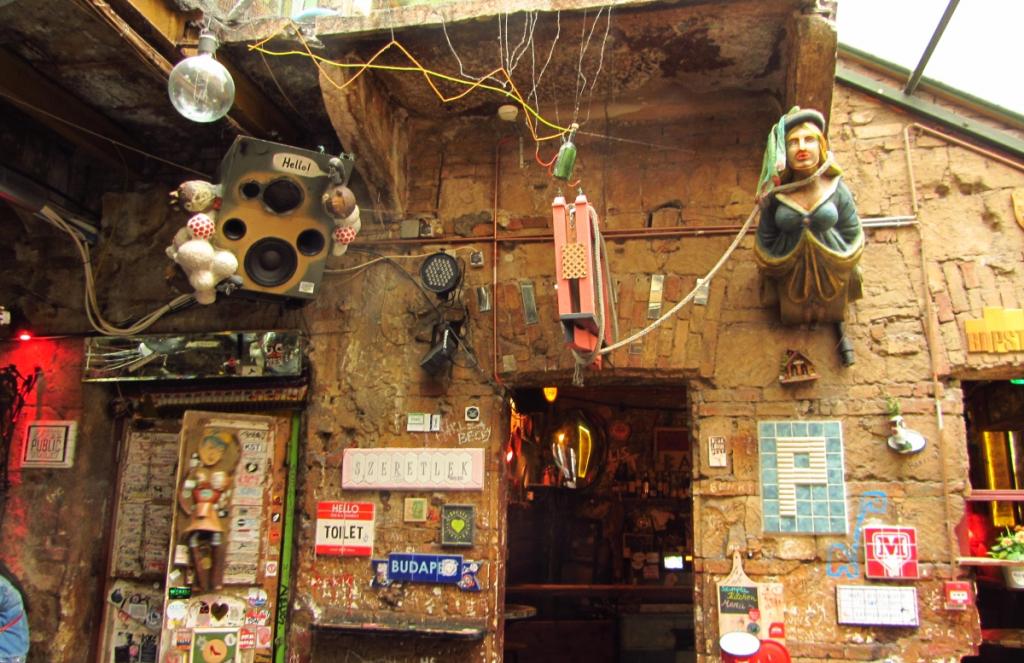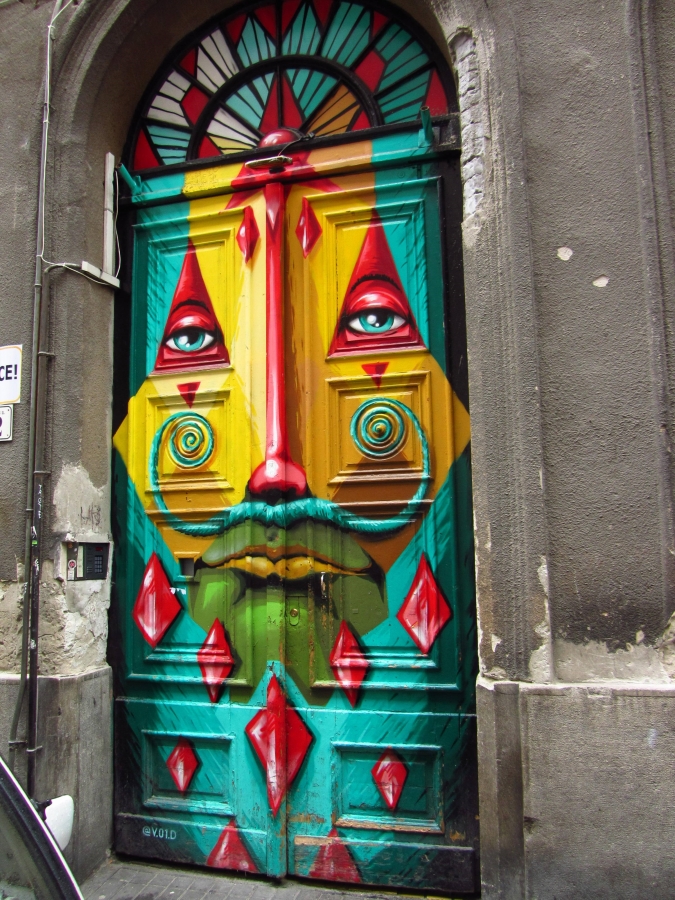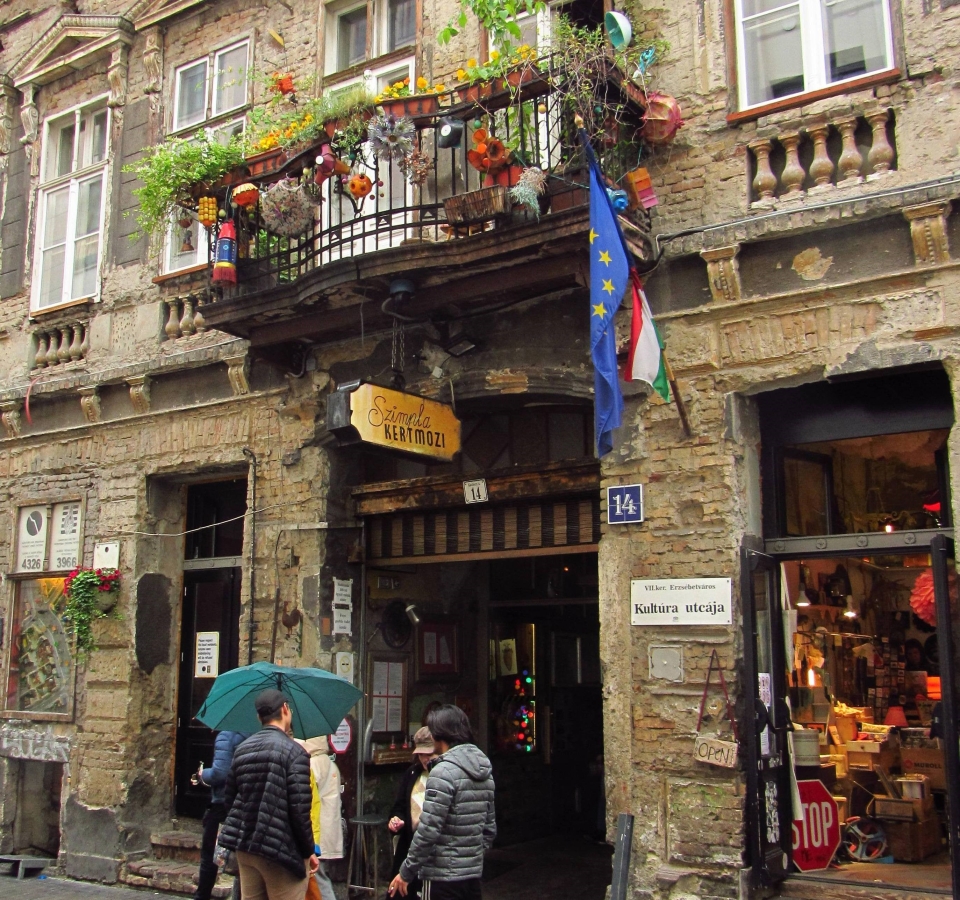Thessaloniki gets ready for its metro launch in November
The underground rapid transit lines have been under construction for almost two decades due to various project delays
 TheMayor.EU logo
TheMayor.EU logo 
Eclectic mix of communist-style memorabilia decorate the walls of Szimpla Kert ruin bar, Source: Plamen Petrov
The local government of the 7th district has regulated the opening hours of party places following public discontent with the noise and pollution
A sudden, amazing discovery made on your own in a strange city, without the help of a tour guide or travel guidebook, is what elevates a mundane tourist experience. Strolling in the maze of streets behind the Great Synagogue during my first visit to Budapest in May 2019, I caught a glimpse of a merry group of young people entering the dark basement of a run-down building, beneath a balcony clad in flower pots and weird hanging objects.
Following the company, I came inside a place which resembled a chaotic flea-market with drink stalls but actually proved to be a time portal leading to my long lost youth. In the courtyard of what once had been a factory stood a row of tables and chairs flanked by bar plots and separees.
Their walls were jam-packed with an eclectic mix of communist-style memorabilia – from old vinyl records and street signs, to meat grinders, Soviet-made TV sets and antique artefacts gathered up from households and dismantled amusement parks, including one gigantic, graffiti-ridden toy rabbit. Fishing for adjectives to describe the feeling, kitschy, unkempt, overabundant came to mind, but also, on second thoughts – surreal, artsy, hipster and yes, trendy.

Art transforms the exterior of rundown buildings in the Party District. Image: Plamen Petrov
Szimpla Kert, the hangout I chanced upon was the first ruin bar to open in Budapest in 2001, setting the trend of ruin bar culture that drew so many tourists to Erzsébetváros (Elizabeth town), the 7th city district, and sparked so much controversy among its residents. Sensing the opportunity, other drinking establishments followed in Szimpla Kert’s footsteps, renting abandoned buildings or lots in the old Jewish quarter which was left largely neglected after the Second World War.
In the years since, partygoers from all over Europe have flocked to what became known as the Party District, lured by budget flights, cheap drinks and affordable accommodation. A 2017 Corvinus University study, quoted by AFP, counted 800 (!) bars and restaurants operating in this neighbourhood.
Here is a short list of must-visit ruin bars, as recommended by Budapest pub crawl operators and solo travellers:
Kazinczy utca 14, szimpla.hu
The original ruin bar remains one of the most popular, even after two years of pandemic onslaught. To keep it afloat, the management regularly organizes various markets and charity events in the open courtyard as well as live music concerts complementing the drinks and pizza. And if you need an offbeat seating where to indulge in your cocktail, you can use the interior of an old Trabant car displayed there for this purpose.

The entrance of Szimpla Kert. Image: Plamen Petrov
Instant-Fogas Complex
Akácfa utca 49-51, instant-fogas.com
Speaking of size, the Instant-Fogas ruin club complex is the biggest in town, occupying an entire remodelled apartment building. It boasts 20 rooms, 15 bars, 8 dance floors and 2 gardens. The drinks are pricier, but the music suits all tastes.
Ellatohaz
Dob utca 19, facebook.com/ellatohaz/
A packed dancing venue with a hostel upstairs – I wonder how they can coexist, but they do! Famed for its live concerts and after-parties, Ellatohaz welcomes revellers who can dance their ass off to popular and retro dance music and then climb a flight of stairs to bed instead of waiting for a taxi.
Dürer Kert
Öböl utca 1, durerkert.com/en
Until 2008, the building of this ruin bar and music venue showcasing established and burgeoning artists was part of ELTE (Eötvös Loránd University). Nevertheless, students still frequent the place, gulping beers while playing foosball, table tennis, darts, and pétanque in the courtyard garden. On weekends, the garden accommodates different markets, including a second hand and vintage clothing bazaar.
Mazel Tov
Akácfa utca 47, mazeltov.hu
The premises of one of Budapest’s newest ruin bars, Mazel Tov, function as a community centre and traditional Jewish food restaurant in daytime. At night, the courtyard turns into a party zone with DJs and live performers.
But this is just one side of the coin. All-night, high-decibel noise from the bars, street pollution and disturbance caused by partygoers and occupants of rental apartments has forced the sleepless residents to rally against the intruders.
Grass-roots pressure culminated in a local referendum on the future of Budapest’s Party District which flopped in February 2018 due to low voter turnout. Tensions failed to calm down, however, and in June 2020 the local government of the 7th district adopted a decree which strictly regulated the opening hours of restaurants, bars, clubs and party places.
According to the new rules, establishments in the area must receive a special permit from the local government if they want to operate between midnight and 6 am. Shops can stay open after midnight on condition that they do not sell alcohol between 10 pm and 6 am.
The new district mayor Péter Niedermüller, member of the opposition Democratic Coalition, took some bashing for the timing of his move - in the thick of the first wave of the coronavirus when the tourism sector needed a helping hand, not another stranglehold. The majority applauded the decision. “I will not miss the stomach-turning sight that is now inner Elizabeth Town,” one former resident wrote on Facebook. “We need fewer and quality tourists, not the hordes of Western Europeans who come for the weekend to tear Budapest down.”

The underground rapid transit lines have been under construction for almost two decades due to various project delays

Now you can get your wine in Talence by paying directly in Bitcoin

That’s because the state has to spend money on updating the railway infrastructure rather than subsidizing the cost of the popular pass

Rethinking renewable energy sources for the urban landscape

The examples, compiled by Beyond Fossil Fuels, can inform and inspire communities and entrepreneurs that still feel trepidation at the prospect of energy transition

Now you can get your wine in Talence by paying directly in Bitcoin

The 10th European Conference on Sustainable Cities and Towns (ESCT) sets the stage for stronger cooperation between the EU, national and local level to fast track Europe's transition to climate neutrality.

At least, that’s the promise made by the mayor of Paris, Anne Hidalgo

The underground rapid transit lines have been under construction for almost two decades due to various project delays

At least, that’s the promise made by the mayor of Paris, Anne Hidalgo

Hostal de Pinós is located in the geographical centre of the autonomous region

Despite its church-y name, the district has long been known as the hangout spot for the artsy crowds

Urban dwellers across the EU are having a say in making their surroundings friendlier to people and the environment.

Forests in the EU can help green the European construction industry and bolster a continent-wide push for architectural improvements.

Apply by 10 November and do your part for the transformation of European public spaces

An interview with the Mayor of a Polish city that seeks to reinvent itself

An interview with the newly elected ICLEI President and Mayor of Malmö

A conversation with the Mayor of Lisbon about the spirit and dimensions of innovation present in the Portuguese capital














